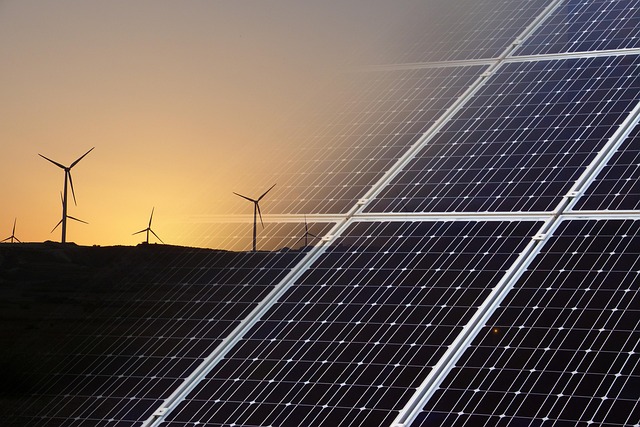Vallourec redefines energy by developing cutting-edge solutions beyond fossil fuels. From solar and wind to hydrogen and bioenergy, their innovations accelerate the global transition to cleaner, sustainable power. Embracing advanced technologies and environmental responsibility, Vallourec drives real progress in energy efficiency and market adoption, shaping a greener future while opening new investment and industrial opportunities worldwide.
Understanding New Energies and Their Impact on the Global Energy Landscape
To truly embrace the new energies, it is important to define what sets these developments apart. “New energies” encompasses renewable energy technologies (like wind, solar, geothermal), advanced clean energy innovations (such as hydrogen and bioenergy), and emerging fossil fuel alternatives powered by novel solutions like carbon capture and battery storage. Unlike conventional fuels, these resources focus on sustainability and reducing environmental impact.
Topic to read : Strategies for Boosting Small Business Growth in the UK’s Evolving Marketplace
Global adoption of sustainable power is accelerating, with trends revealing a shift in energy market dynamics. Increasing demand for alternative energy development is driven by both policy incentives and the urgent need to address climate change. Countries across the globe have ramped up investments in green energy, fueling growth in solar farms, wind arrays, hydrogen infrastructure, and smart grids.
Key drivers of this transition include stricter environmental standards, evolving public opinion, and international agreements targeting lower carbon footprints. Together, these factors are reshaping how nations and companies plan their energy transition strategies from supporting renewable fuels in transportation and heavy industry, to investing in grid modernization and storage. The result is a more resilient, diverse, and sustainable energy landscape for 2025 and beyond.
Also to discover : How Can UK Businesses Adapt to New Regulations in 2024?
Core Types and Recent Advancements in New Energy Solutions
Solar, Wind, and Geothermal Solutions: Recent Breakthroughs in Generation and Efficiency
Precision: Solar power systems and wind energy generation now use advanced turbine designs and high-efficiency photovoltaic cells, delivering more power with fewer resources. Geothermal energy utilization leverages deeper drilling techniques and improved heat-exchange materials, expanding usable sites and output. These renewable energy technologies provide reliable, low-emission supplies, increasingly vital for both grid-scale and decentralized settings. Innovations in wind energy generation have improved adaptability, enabling installations in offshore and challenging locations. Similarly, solar power systems with bifacial modules and smart inverters achieve greater capture and integration, supporting year-round reliability.
Hydrogen and Bioenergy: Deployment, Innovations, and Real-World Applications
Hydrogen fuel applications move beyond pilot projects, now powering transport fleets and heavy industry. Bioenergy production methods are streamlined with waste-to-fuel processes, such as anaerobic digestion for biogas or algae-based feedstocks, reducing dependency on fossil fuels. These low-carbon energy options facilitate practical decarbonization where electrification proves costly or complex. Such renewable energy technologies are central to pioneering innovative energy solutions case studies across industries.
Energy Storage, Grid Modernization, and Regulation: Integrating New Energies
Energy storage innovations—ranging from lithium-based batteries to thermal and mechanical storage—allow surplus renewable output for later use. Grid modernization projects introduce automation, digital monitoring, and two-way distribution, preparing infrastructure for increased renewable energy technologies and low-carbon energy options. Energy sector regulations are adapting, creating frameworks for secure, transparent integration of hydrogen fuel applications, bioenergy, and energy storage innovations into national supply strategies.
Industry Case Studies: Leadership From Corporate and Coalition Action
Chevron New Energies: investment strategies, CCUS initiatives, and hydrogen expansion
Chevron New Energies leads energy innovation sectors by investing $2.21–$2.28 billion to accelerate decarbonization approaches. Central to their vision is carbon capture and storage (CCUS)—notably, operating one of the largest global projects which has captured over 1.5 million tonnes of CO2. Emerging CCUS technology pilots target hard-to-abate industries and enable clean energy investments with scalable impacts.
Hydrogen is another pillar: Chevron produces around 1 million tonnes annually, holding 75+ hydrogen technology patents. Its hydrogen expansion encompasses fueling station networks, industrial supply chains, and advanced integration into refining infrastructure, all supporting green energy advancements and a robust future energy mix.
Energies Coalition for Transport & Logistics: accelerating decarbonization through multi-sector collaboration
The Energies Coalition for Transport & Logistics unites 21 diverse international partners to champion rapid decarbonization approaches within transport. Collaboration drives adoption of sustainable power, expanding alternative energy pathways and large-scale clean energy investments. The coalition generates research, shapes regulations, and forges cross-sector connections for effective carbon capture and storage deployment.
Highlights of other new energy company profiles and coalition partnerships shaping the future
New energy company profiles showcase broad corporate renewable commitments and increasing international clean energy cooperation. Projects span solar, wind, and hybrid renewable integration, all supported by global green energy advancements. Coalition partnerships push boundaries in energy innovation sectors, leading markets toward reliable, low-carbon solutions for 2025 and beyond.
New Energies in Society: Adoption, Environmental Benefits, and Consumer Accessibility
Policies, Incentives, and Funding Models for Broad-Scale Adoption of New Energies
Governments and industry leaders underpin broad adoption of renewable energy policies by developing regulations and programs that promote clean power generation. Renewable energy incentives such as tax credits, rebates, and preferential tariffs make these new technologies financially attractive. Public and private clean energy funding sources—including green bonds and venture investments—play a significant role in scaling up energy transition. Sustainable infrastructure planning integrates such incentives and funding into long-term strategies, ensuring reliable and equitable adoption of future energy solutions.
Societal and Environmental Benefits: Emissions Reduction, Job Creation, and Climate Action
Widespread energy efficiency improvements not only lower operational costs but significantly reduce greenhouse gas emissions. This leads directly to robust climate change mitigation by addressing energy sector pollution at the source. Clean energy job growth is another key benefit: the expansion of renewable industries creates a variety of employment opportunities in installation, maintenance, engineering, and grid modernization, actively fostering more resilient local and national economies.
From Industry to Community: Improving Accessibility and Participation in the Energy Transition
Community energy projects bridge the gap between large-scale operations and end-users, empowering local groups to manage their own power sources. Green finance in energy—through local banks and crowdfunding—removes barriers to entry for smaller participants. These collaborative approaches advance the transition by democratizing energy access and enhancing participation for all.


